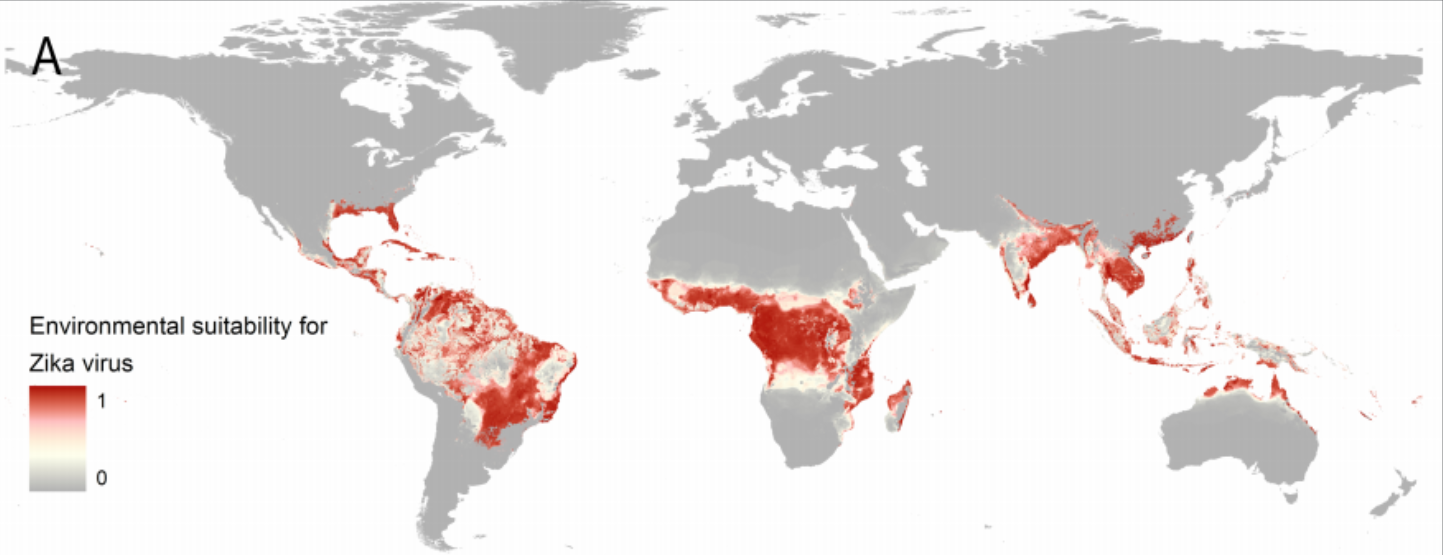Getting ahead of Zika’s spread
Published April 22, 2016

As the Zika virus advances, new science is emerging that can help decision-makers as they strive to stay ahead of this rapidly evolving situation. Thanks to IHME Professor Simon Hay and colleagues, policymakers in the US and the UK now have detailed information about where Zika could spread next.
Published in an article entitled “Mapping global environmental suitability for Zika virus” in eLife in April 2016, Professor Hay and colleagues produced a map that shows where conditions are ripe for Zika to occur at the three mile by three mile level. Three months prior to the article’s publication, Professor Hay presented these findings at a meeting on Zika convened by the US Department of Health and Human Services and the Biomedical Advanced Research and Development Authority (BARDA). The information presented at these meetings, including the information provided by Professor Hay, was used to inform testimony given by BARDA Director Dr. Robin Robinson at the Senate Committee on Health, Education, Labor, and Pensions hearing on Zika.
Recently, the UK government convened a scientific advisory committee to discuss the risk Zika might pose to UK citizens, and Professor Hay, together with his colleagues from Oxford, presented their Zika maps. These findings have helped inform travel advice for UK citizens, especially pregnant women, about the potential risks of traveling to areas where Zika has occurred or where conditions are suitable for Zika to occur.
To create the Zika map, Professor Hay and colleagues looked at places where the Zika virus has occurred and identified environmental factors that make these places suitable for transmission of the virus. They found that the risk of Zika virus transmission is strongly influenced by precipitation, temperature, urban/rural status, vegetation, and humidity. To predict areas where Zika virus transmission might occur, the researchers employed techniques that have been used to map diseases such as dengue, chikungunya, leishmaniasis, and Ebola.
Zika is only one of the infectious diseases that Professor Hay studies. He has also studied influenza outbreaks in China, Ebola in Africa, and malaria around the world. The Wellcome Trust, where Professor Hay is a Senior Research Fellow, recently interviewed him about his work and asked him to describe how he thinks the world could better prepare for infectious disease epidemics.
“It would be some mechanism whereby people can share information as quickly and as openly as possible,” said Professor Hay. “I’m not a frontline clinician dealing with the hard end of this business, but time and time again I see bureaucratic obstacles to sharing in emergencies – affecting everything from the genomes of pathogens to patient data.”